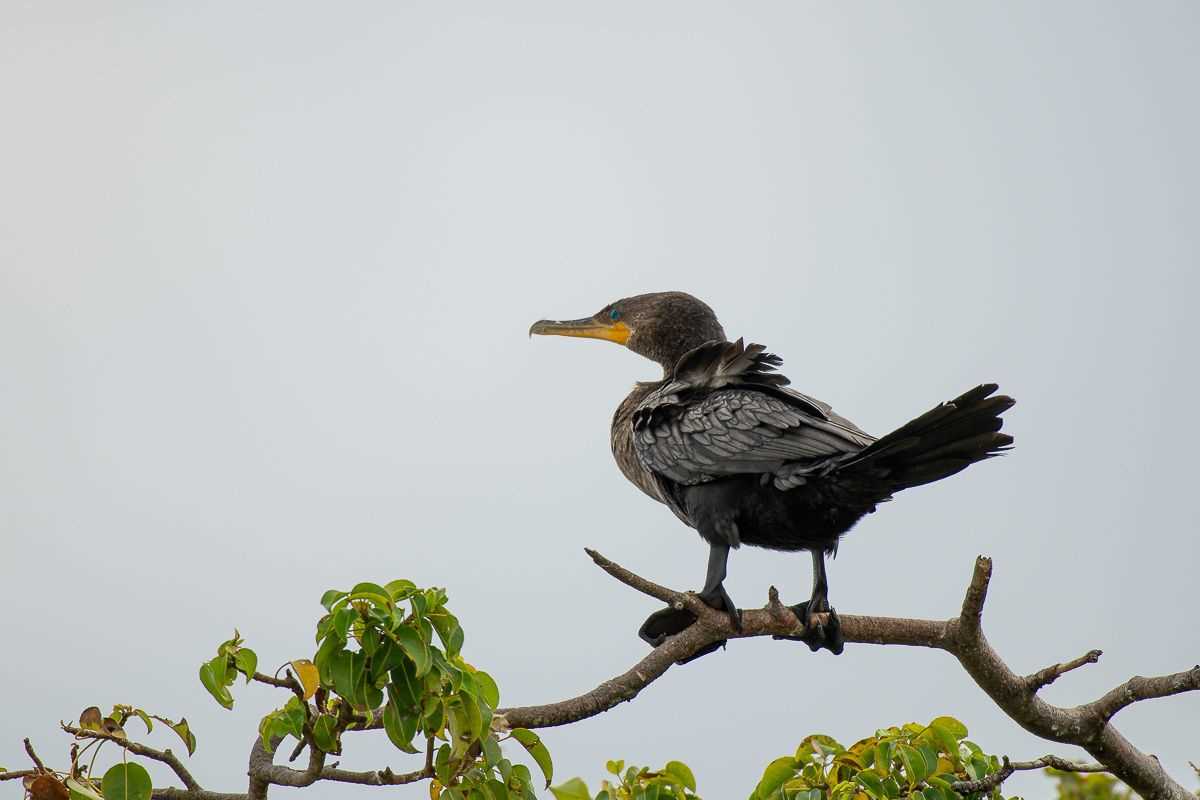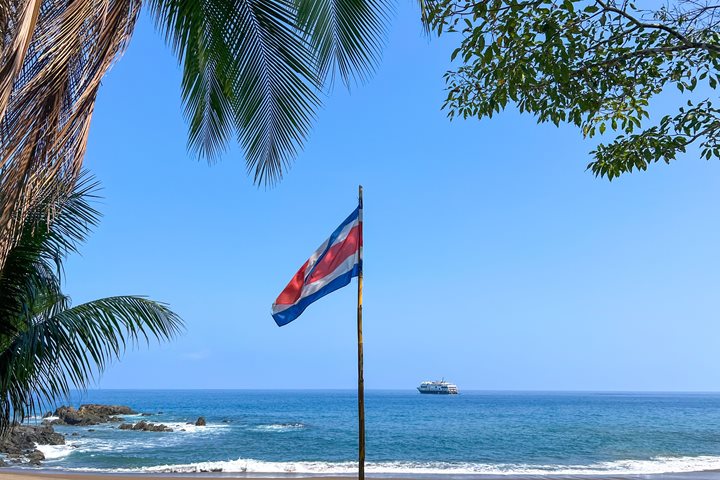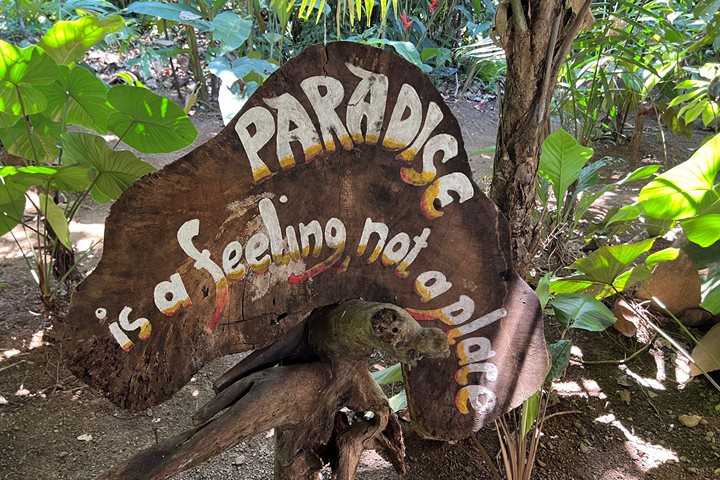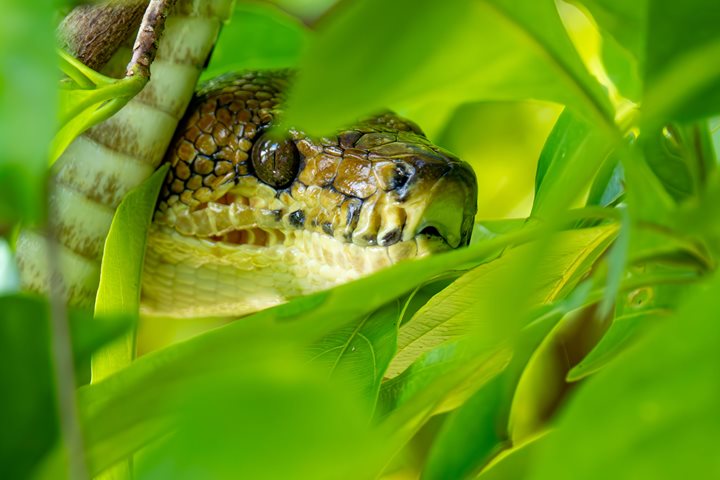This morning we awoke off the coast of Isla Iguana, home to a wildlife refuge on land that had once been used as a bombing range in World War II. Located on Panama’s Azuero Peninsula, the 58-hectare Isla Iguana Wildlife Refuge is an important nesting site for both frigatebirds and sea turtles. Even though the island still bears the scars from its past in its old bomb craters, it offered peaceful memories for us.
We disembarked early in the morning onto the white sandy beach with our trusty gear and an adventurous spirit. Options included hiking, swimming, snorkeling, and taking photos of the resident frigatebirds, or all the above. Some of us opted for a short hike inland, where we immediately saw hundreds of hermit crabs. Unable to make their own shell, hermits must find their refuge amongst the debris or the edge of the beach, selecting for a shell that someone else made and carrying it with them until they outgrow it. Along the understory of a secondary growth path, we also spotted termite nests and black-tailed iguanas.
The main attraction was the large frigatebird colony, where the breeding season was just starting. An adult male will choose a nesting spot, perhaps in some shrubs on a rocky ledge, and the female either agrees to it or not. We even got to see a few males flying overheard with inflated red balloons at their throats, a mating display. Amongst them, a shy and single neotropical cormorant called the attention of us all.
Around noon we reluctantly returned to the ship to begin our journey around the Azuero Peninsula to our next destination, Coiba National Park.









